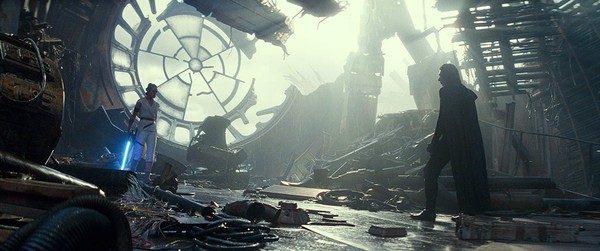In 1977, a science-fiction movie called Star Wars was released in only 40 theaters in the US. Initially meant to be a small passion project of director-writer George Lucas, it soon became the highest-grossing movie in the world and spawned two sequels, along with a sizable, passionate fanbase.
More than 20 years later, Star Wars returned to the silver screen with Lucas’ Star Wars: Episode I – The Phantom Menace, followed by another two sequels, together known as the “prequel trilogy”. By then, the children who watched the “original trilogy” were already adults. Thus, the prequels had two kinds of audiences: a generation newly introduced to Star Wars, and long-time fans who grew up loving the originals.
I was born too late to watch either trilogy in the cinema, so my viewing experience was quite different from that of previous generations. I didn’t have to wait three years after the “I am your father” revelation, or more than 20 years to find out how Anakin Skywalker became Darth Vader. No — I was able to enjoy all six movies at home, with fresh eyes and no expectations.
However, many fans of the originals didn’t like the prequels when they came out. The prequels didn’t meet their expectations because they lacked the depth of the first three movies. Similarly, people who grew up with the prequels may not see the originals in the best light. The originals didn’t have the visual effects or action sequences that made the prequels exciting. Seemingly, Star Wars fans tend to prefer the trilogy they grew up watching. Of course, whatever they saw in the cinema as a child would mold their expectations. But while Generation X had the original trilogy, and millennials had the prequel trilogy, my generation didn’t have a Star Wars trilogy of our own — until 2015.
When a new Star Wars trilogy was announced, fans cheered. Although a few expressed concern that Lucas wasn’t involved, many were eager to see new stories told by new voices. The first of this “sequel trilogy”, Star Wars: The Force Awakens, was the first Star Wars movie I saw on the big screen. I was blown away, along with many other kids of my generation.
Some long-time fans, however, complained that the movie borrowed much of its plot from the 1977 original. Among many similarities, it had a masked villain commanding an army of stormtroopers, a band of rebels fighting against an authoritarian power, and a protagonist of mysterious parentage from a desert planet.
Director JJ Abrams admits this was intentional, reasoning that the new trilogy needed to be “established with something familiar”. With the prequels’ negative reception from fans of the original trilogy, one could understand why they played it safe. The movie needed to bring Star Wars to yet another generation and, at the same time, appease older fans who grew up with either the originals or the prequels. Two years later, Star Wars: The Last Jedi had the task of convincing older fans that the sequel trilogy could be different. It may have done this job too well — one common criticism was that it subverted expectations so much that it no longer felt like Star Wars.

The sequels aren’t terrible movies, though. On the contrary, they’re critically and financially successful. However, it’s fair to say they haven’t brought enough new material to the franchise. The prequels, for all their flaws, showed the galaxy in a different situation while still feeling like Star Wars. The sequels, on the other hand, portray a conflict too similar to the originals’ to be worthwhile additions.
Nostalgia is good but becomes cheap when overdone. The sequels never needed to borrow plot points, only provide moments that would remind fans of the Star Wars they grew up with. These moments are actually already present: among others, Han and Chewie’s return to the Falcon, Leia’s “Help me, Obi-Wan Kenobi” recording, and Yoda’s reappearance all provide a dose of genuine, heartwarming nostalgia.
This December, the final movie in the trilogy — and the entire saga — will be released. Star Wars: The Rise of Skywalker must provide a satisfying conclusion, win over audiences who want something new, and make fans nostalgic one more time. That last one seems to be covered: the trailers depict the return of fan-favorites from the originals and the prequels, such as Lando and Emperor Palpatine.
Hopefully, Abrams has learned from both The Force Awakens and The Last Jedi and takes the right amount of risks in The Rise of Skywalker. As always, there will likely still be fans that won’t be satisfied. But, as part of the generation that will call the sequel trilogy our own, I want it to finally strike just the right equilibrium of new and old — bring balance to the Force, if you will.

